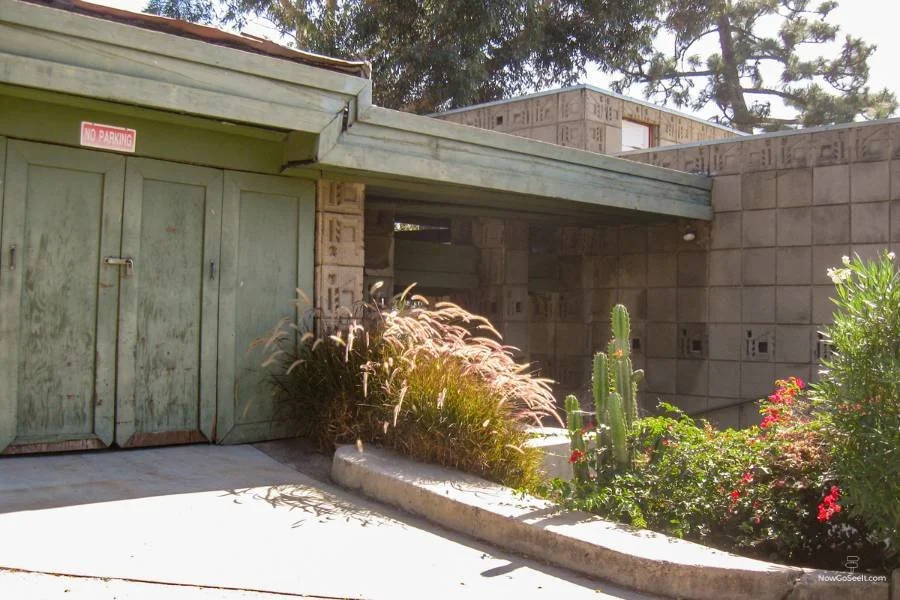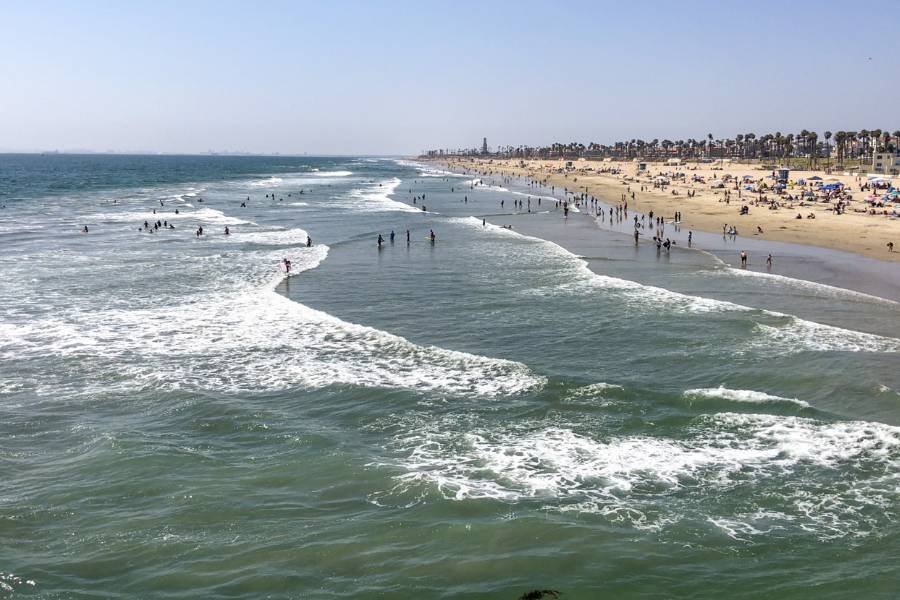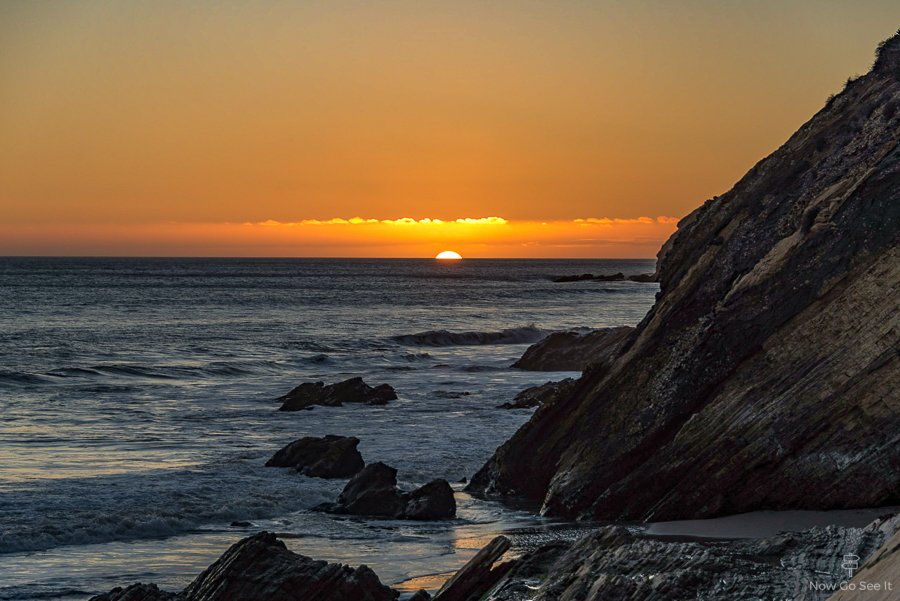Frank Lloyd Wright Houses in Los Angeles
Now Go See It is reader-supported. When you buy through links on our site, we may earn an affiliate commission.
Exploring all the Frank Lloyd Wright buildings and homes in Los Angeles can be an enriching experience for architecture enthusiasts.
Frank Lloyd Wright Houses in Los Angeles: (Jump To)
Lloyd Wright’s Contributions:
Hollyhock House and Barnsdall Art Park
Map: Google Maps
Website: Link
The Hollyhock House is one of the treasures of Los Angeles, epitomizing the architectural brilliance of Frank Lloyd Wright. Recognized as one of his paramount creations, this iconic residence has earned a prestigious spot among the eight sites constituting the UNESCO World Heritage site, The 20th Century Architecture of Frank Lloyd Wright. Notably, it stands as the sole UNESCO-listed attraction within the city of Los Angeles.
Under the careful stewardship of the city of Los Angeles, the Hollyhock House offers self-guided tours, priced at just $7. Advance ticket booking is highly recommended. Within the Barnsdall Art Park, the house takes center stage, surrounded by other Wright-designed marvels. The park also includes the Barnsdall Arts Center, a theater, a visitor center, and plenty of green space to enjoy.
If you can’t manage tickets to the interior, as a public park, a leisurely stroll through the grounds allows you to view the architecture of the home’s exterior. As the sun sets, the panoramic views of the sprawling urban landscape provide an inspiring backdrop. Careful viewers can see the Ennis House, another Wright masterpiece, atop the hill to the North.
ad:
Ennis House
Map: Google Maps
The Ennis House is an architectural masterpiece located in the Los Feliz neighborhood. The iconic residence is celebrated for its distinctive Mayan Revival style, characterized by intricately patterned concrete block walls that create a visually stunning facade.
Constructed between 1923 and 1924, the Ennis House is one of four concrete block houses designed by Wright in the Los Angeles area. The house is named after its original owners, Mabel and Charles Ennis, who commissioned Wright to build their dream home. The unique blocks used in its construction were created on-site and feature intricate geometric patterns inspired by Mayan art and architecture.
Over the years, the Ennis House has faced various challenges, including damage from earthquakes and weathering. However, efforts have been made to restore and preserve this architectural treasure. The Ennis House was last sold in 2019 and remains a private residence.
The best way to see the home is by taking a walk through the neighborhood. We highly recommend Charles Fleming’s book Secret Stairs (link below). The Ennis House is included on Stair Walk #29.
Samuel Freeman House
Map: Google Maps
The Samuel Freeman House is another notable work located in the Hollywood Hills. It was commissioned by Samuel and Harriett Freeman in 1923 and completed in 1925. Designed during Frank Lloyd Wright's "textile block" period, the Freeman House showcases the use of concrete blocks with intricate geometric patterns, similar to the Ennis House. The textile block design gives the Freeman House a distinctive visual appeal, creating a harmonious blend of architectural innovation and natural surroundings.
One of the notable features of the Freeman House is its integration with nature, as Wright often sought to create a seamless connection between the built environment and the landscape. The residence is situated on a sloping site, allowing for terraced gardens and outdoor spaces that enhance the overall living experience.
Like the Ennis House, the property has faced challenges and deterioration over the years. However, efforts have been made to restore and preserve this architectural gem, particularly by the University of Southern California. However, unable to secure the necessary funding to preserve and restore the home, the university sold the property in 2022. The home is best viewed by walking by or from the intersection of Highland and Franklin Ave. in Hollywood. The home’s terraces can be seen on the hillside above the Holiday Inn Express.
Millard House (La Miniatura)
Map: Google Maps
The Millard House is another of Wright’s notable textile block houses. Located in Pasadena, California, the house was commissioned by Alice Millard and built between 1923 and 1924. The Millard House is considered one of the early masterpieces of Wright's textile block period.
La Miniatura stands out for its unique use of precast concrete blocks with intricate patterns. The residence features a horizontal orientation, open interior spaces, and a blending of indoor and outdoor elements, characteristic of Wright's Prairie School style. The Millard House is named "La Miniatura" (Spanish for "The Miniature") due to its design concept that envisions the house as a miniature version of a larger estate.
The home is also privately owned but can be viewed from the street and through the fence on Rosemont Avenue. However large lush foliage makes any view quite difficult.
We recommend the GoCity Pass to save loads of money on attractions.: Check it out by clicking this affiliate link: GoCity
Storer House
Map: Google Maps
The Storer House, built between 1923 and 1924 for Dr. John Storer, embodies the essence of Wright's vision for organic architecture. This final textile block house on the list completes the four iconic textile block homes built in Los Angeles. The home’s intricate geometric patterns, tell a tale of innovation and craftsmanship that defines Wright's exploration of form and function.
Sadly, as with most of the homes on this list, the Storer House is not open to the public. Its restoration efforts stand as a commitment to preserving the historical significance of this architectural gem. The home is easily viewable from the street below.
Lloyd Wright’s Contributions
Frank Lloyd Wright's son, Lloyd Wright, was also an accomplished architect, and he left his mark on Los Angeles with several notable buildings. Here are a few houses designed by Lloyd Wright in the Los Angeles area:
Wayfarers Chapel
Map: Google Maps
Website: Link
Wayfarers Chapel, also known as "The Glass Church," is a stunning architectural masterpiece located in Rancho Palos Verdes. Designed by the renowned architect Lloyd Wright, the son of Frank Lloyd Wright, the chapel is renowned for its unique and ethereal design, seamlessly blending with the natural beauty of its surroundings.
Wayfarers Chapel has become a popular venue for weddings, thanks to its picturesque setting and unique architecture. Beyond its role as a place of worship, the chapel welcomes visitors from all walks of life to experience the harmonious blend of art, architecture, and nature. It’s free to visit the grounds and interior of the chapel. The building is one of the newest National Historic Landmarks.
Your Vacation is just a click Away.
Book your stay at a VRBO Today.
Sowden House
Map: Google Maps
Website: Link
The Sowden House is located in the Los Feliz neighborhood. The house was built in 1926 for painter and photographer John Sowden. One of the most striking features of the Sowden House is its Mayan Revival architectural style similar to the area homes designed by Wright’s father.
The interior of the Sowden House features an open floor plan originally designed for musical performances and open-air gatherings. The home is used as an event space and is best visited by attending an event at the home. Events are updated on their website.
Check out our other posts about things to see and do in Los Angeles or California!
Or visit our Destinations page to be inspired.
Derby House
Map: Google Maps
The Derby House, located in nearby Glendale, is a notable example of Lloyd Wright's work continuing the theme of Mayan modern architecture. The home was built in 1926 for businessman James Daniel Derby and is listed on the National Registry of Historic Places.
This private home was listed for sale in 2023 for $3.3 Million and is only viewable from the street below.
Book exciting food tours, cooking classes, or dining experiences with EatWith. Use our EatWith promo code 46D22E68 for €10 off your first booking.
Lloyd Wright Studio/Residence
Map: Google Maps
The Lloyd Wright Studio and Residence is located in the Brentwood neighborhood of Los Angeles. Lloyd Wright designed the studio and residence for himself in 1927. The structure showcases elements of both modernism and Mayan Revival.
The studio and residence underwent extensive restoration efforts in the early 2000s, aiming to preserve its architectural significance and historical value. The property stands as a private residence and is not typically open to the public for tours. However, the exterior can still be admired for its architectural uniqueness from the street.


















